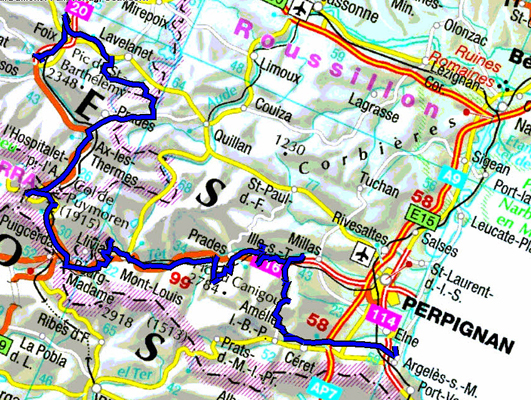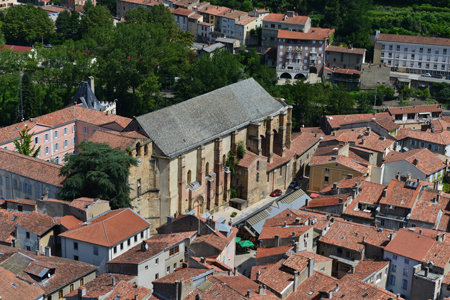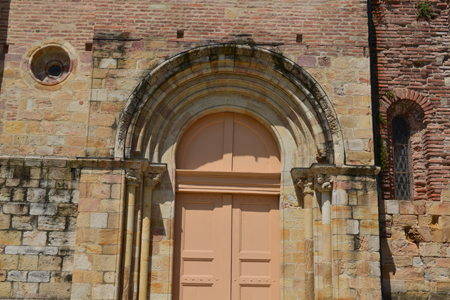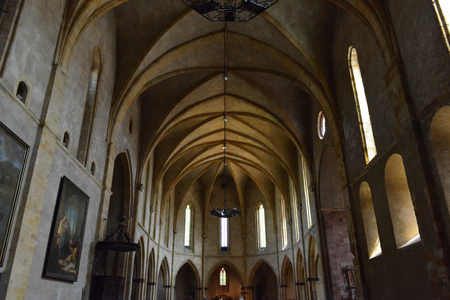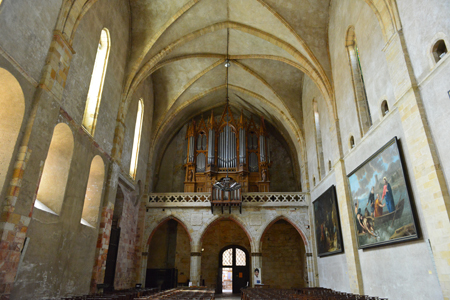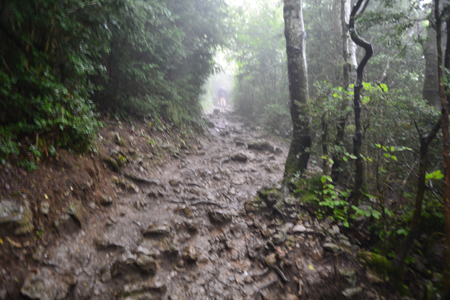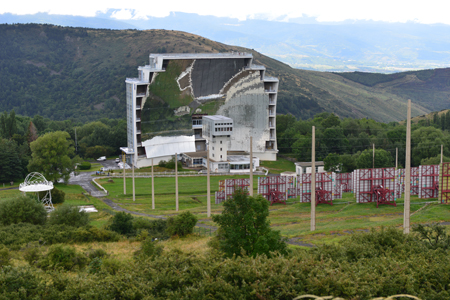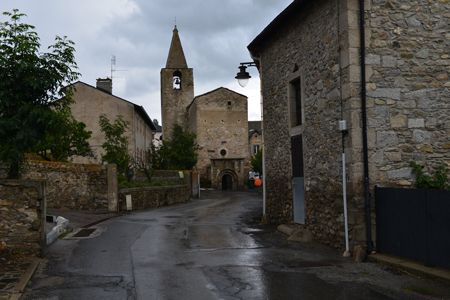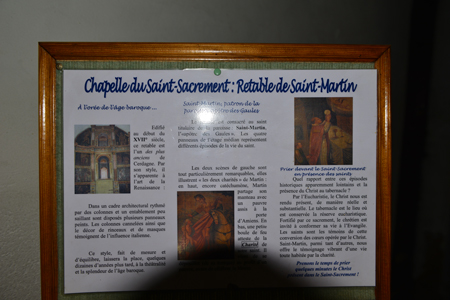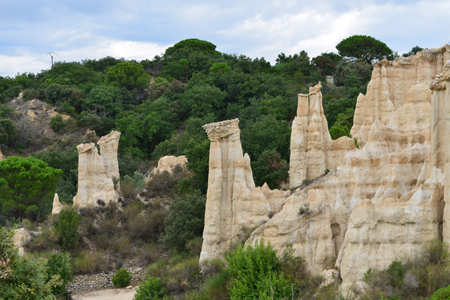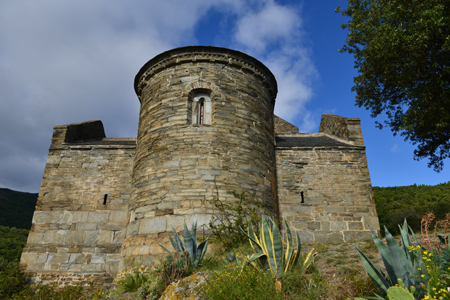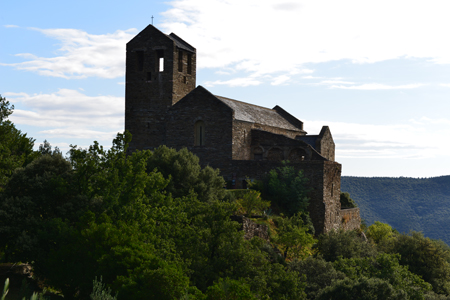Park of the prehistory
On Monday, August 18 I passed part of
the shinning morning upon to the Park
of prehistory north of Tarascon-on-A.
The main building is devoted to the
parietal art of the caves of the area.
The access passage to the room of the
Pyrenean steppes is a patchwork of
drawings humorously presenting the
evolution of humanity without
forgetting impossible to circumvent
Darwin. The tour in the half-light
with a audio-visual guide is a true
initiatory course of the parietal art
of the Magdalenian time starting from
reconstitutions in 3D. At the entry a
reconstitution of the dune of the
Steps of the cave of Niaux lets appear
the steps of three old children of
more than 5,000 years, very moving.
Several rooms develop the old and
modern techniques of analysis and
dating of paintings. But alas the
interpretation of certain panels is
and remains prone to conjectures and
arguments of experts. Nevertheless it
seems that shamanist rites are
represented. In the park in the open
air various workshops teach the
techniques of our ancestors, drives
out, habitat, lighting of fire and a
labyrinth on a tour of the recognition
of the sounds. Highly advisable visit.
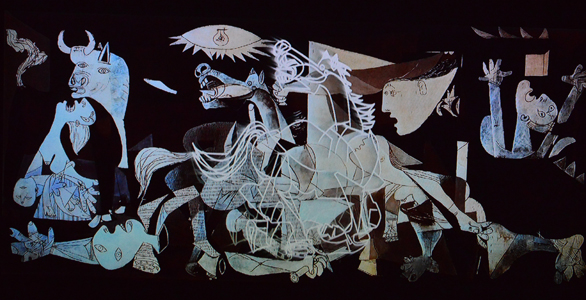 |
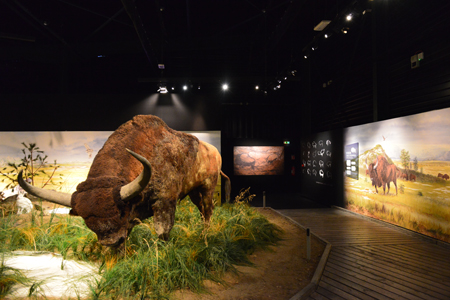 |
 |
| Pyrenean steppe |
Prehistoric weasel |
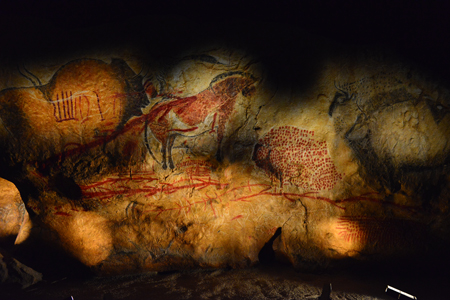 |
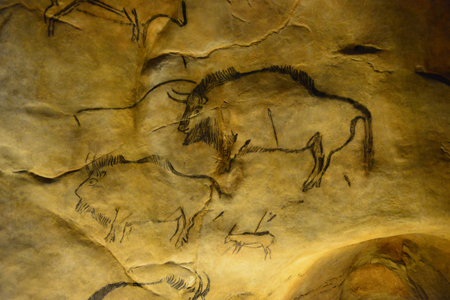 |
| Grotto of Marscoulas |
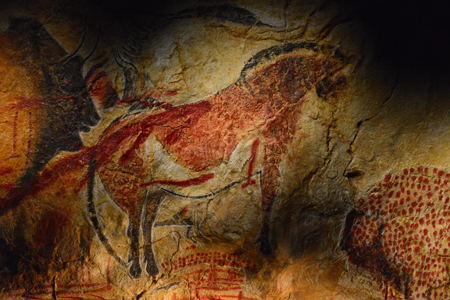 |
| Prehistoric horse |
Foix
The beginning of the afternoon occurred at
Foix, prefecture of Ariège and city to the
feudal during the crusade against the
Albigensians and the one hundred year old
war.
The château
The castle is built on a piton dominating
the city. The remaining part is only the
quarter of the original buildings. Two
turns are opened to the public with
interpretative panels of the medieval
history of the county and counts de Foix
by date, which is not without pointing out
the handbook of history by Mallet and
Isaac of my youth.
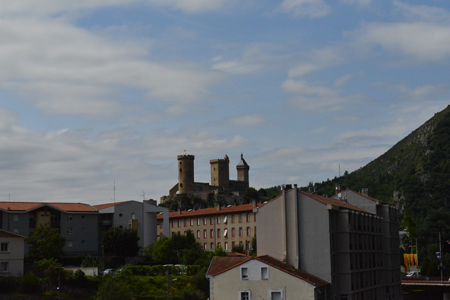 |
| Castel of Foix |
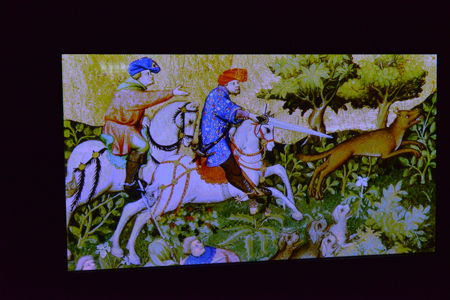 |
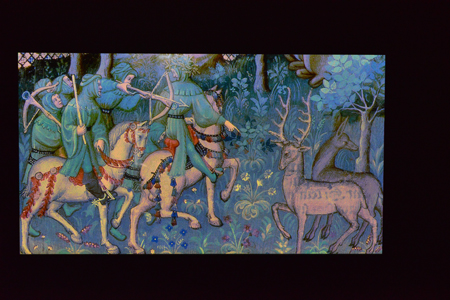 |
| Book of hunting by
Gaston Fébus |
Church of Saint-Volusien
From top a very beautiful sight makes
discover the church Saint-Volusien remains
of an abbey now disappeared. The entry,
the former part of the church as well as
the crypt are of Romanesque style the
remainder is of style Gothic. Particularly
interesting the sculptures of the seats of
the stalls go back to 1670. Then I moved
towards Montségur where I bivouacked at
the eponymous pass with 1059m.
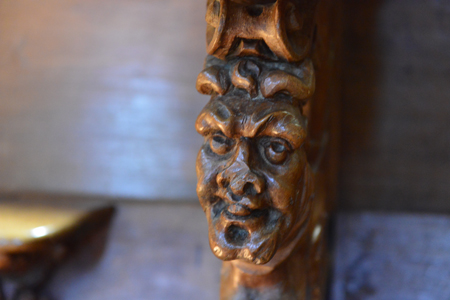 |
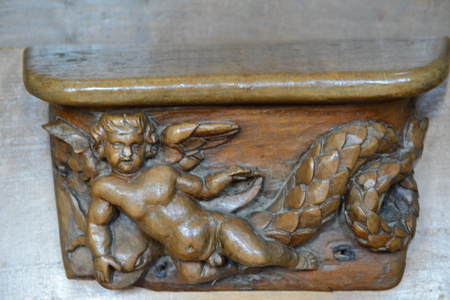 |
| Stalls of the
chorus |
Château de Montségur
It rained all during the night
accompanied by a violent storm. In the
small hour the clouds were at the
short-nap of the pass not very filling
with enthusiasm to go up to the
castle. I put my climbing boots
and I took my sticks at 10 am to leave
to the attack the pog at 1216m. The
Green Guide gives one hour outward
journey and return, but, I put 1:30
certainly I left from the pass and the
rain gives the rocks of the track very
slipping moreover the climbing boots
do not have a grip. Around the
interior court various buildings were
formerly leant at the wall. I will
tell the history neither of Cathar nor
of the war against the Albigensians. I
return the Net surfer to Wikipedia.
The descent was very dangerous because
the rock track was very slipping like
my very arthritic articulations. On
return to my camper I decided to
remain for a second night at the pass.
 |
| Castle of Montségur on Monday arriving at the pass around 17 pm |
 |
| Map of the castrum |
 |
 |
| The wall with a pentagonal plan |
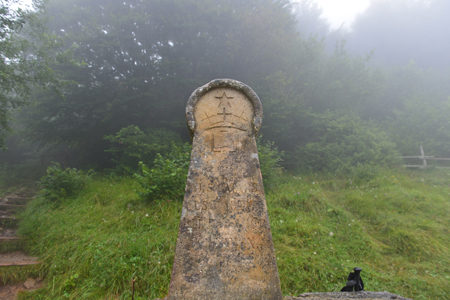 |
| Stele with the cross of Toulouse |
On Wednesday morning the sky was
always cloudy, it rained by
intermittent all the day. I was to go
to Andorra, at Pas de la Casa, to
buy an alcohol order in
duty-free. From l'Hospitalet to le Pas
de la Casa was an uninterrupted line of
vehicles, in the beating rain and at
the descent even scenario with in more
a customs control randomly, bingo it
was not me. I had a break lunched
in the rain at Hix after having
wanted to visit this Romanesque church of
the 12th century, alas closed.
Odeillo
I continued up to Font-Romeu made up
of several villages. In Odeillo a
photo stop for the solar furnace then
in the village to visit the Romanesque
church with the retable of Saint
Martin. Second stop at Ermitage for
the same reasons the retable and a
camaril, small reception room whose
grid was closed, decorated by Josep
Sunyer. I tried by going
up at the Belvédère to
bivouac there, ok, no panel of
prohibition. Altitude is of 2007m in
GPS, the rain is always with go.
Four solaire
Chapelle du Saint-Sacrement
 |
 |
| Retable de
Saint-Martin by Sunyer |
Ermitage
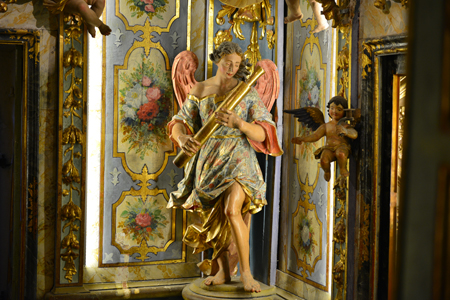 |
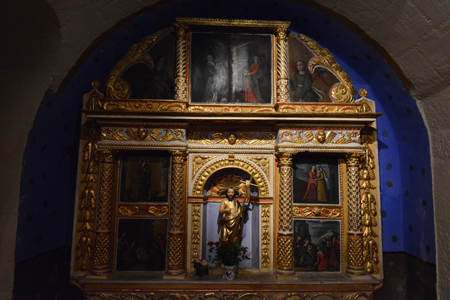 |
| Camaril by Josep Sunyer |
Retable byr Sunyer |
Mont-Louis
On Thursday morning at 9:00 the
village of Mount-Louis was hardly
waked up; the shops prepared their
stalls, not heart which lives in the
streets. The cold was still sharp. The
city was strengthened by Vauban in
1679 after the treaty of the Pyrenees,
1659, fixing the borders with Spain.
The fort never had the opportunity of
being useful, if it is not currently
like training center of the commandos
of the French Army.
 |
| Porte de Mont-Louis, place forte
by Vauban |
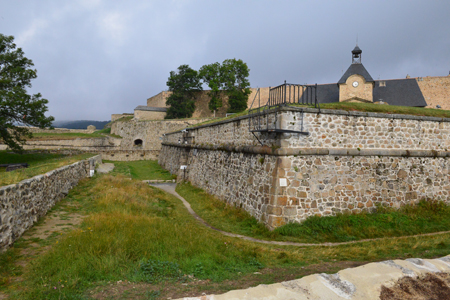 |
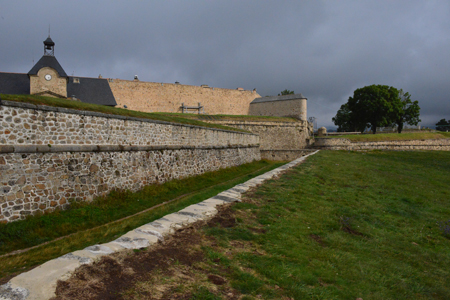 |
| Military enceinte |
Villefranche-de-Conflent
A little further Villefranche-de-Conflent
is an old fortified town which played a
part in the strategy between the kingdom
of Aragon and the League of Carcassonne.
Vauban, still him, supplemented the
fortifications of the city. It is
registered at the world heritage of
UNESCO. Fort Liberia on the Belloc hill is
a private property. The streets of the
city are bordered of shops of local arts
and crafts.
 |
| Gate of Spain 1791 |
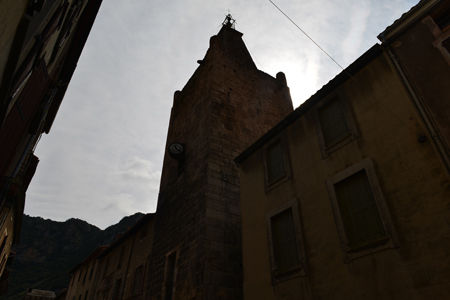 |
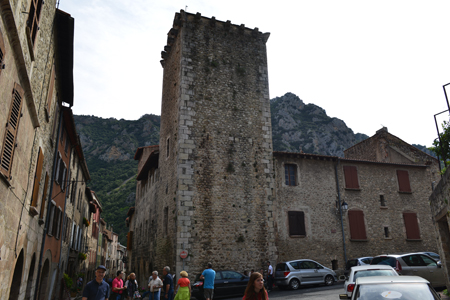 |
| Belfray |
En Solanell Tower |
 |
 |
| Clock tower St Jacques church |
Romanesque gate |
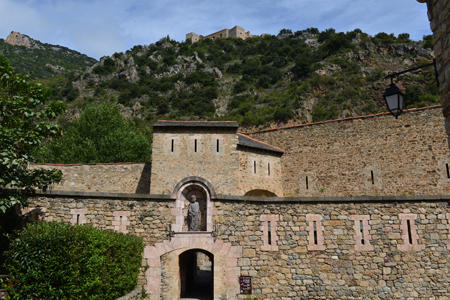 |
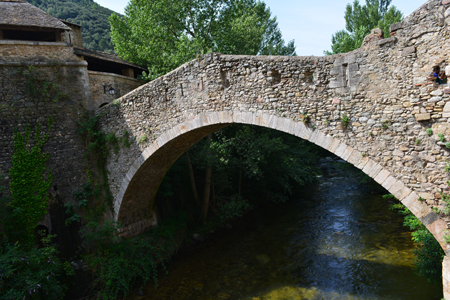 |
| Fort Liberia on Belloc hill, 1679 |
St Pierre bridge, 1263 |
The Canigou
France of the Former regime was
divided between the sword and the
aspergillum, military and religious
architecture, fortified towns and abbeys. My next visit was in Canigou,
mountain crowned for the Catalans. He was
regarded a long time as the summit of the
Pyrenees.
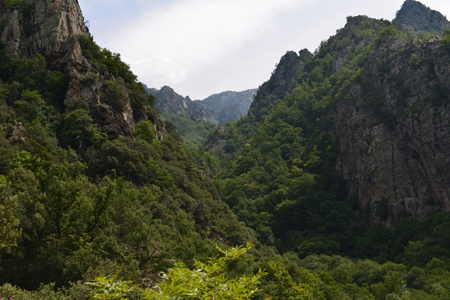 |
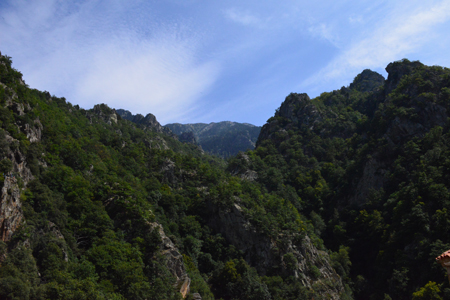 |
| Landscape |
Abbaye Saint-Martin-du-Canigou
Guifred II count de Cerdagne chooses
Canigou to found a Benedictine abbey. The
two churches were devoted in 1009. It is
built on a peak with 1094m of altitude. At
the beginning of the 20th century the
monastery was a ruin rebuilt patiently by
the monks. Photographs of time testify
some. I bivouacked in underwood at the
entrance of Casteil.
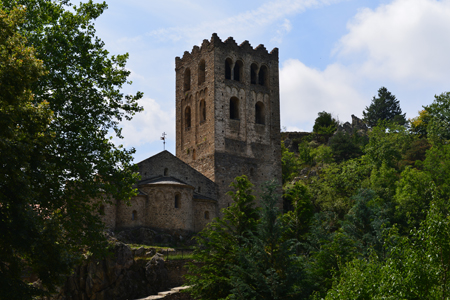 |
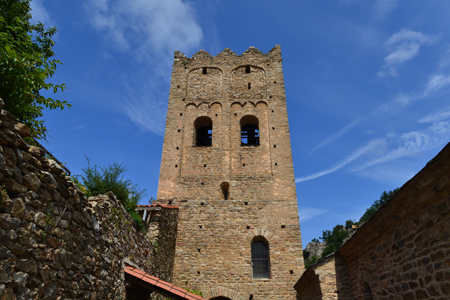 |
| Abbey St-Martin-du-Canigou |
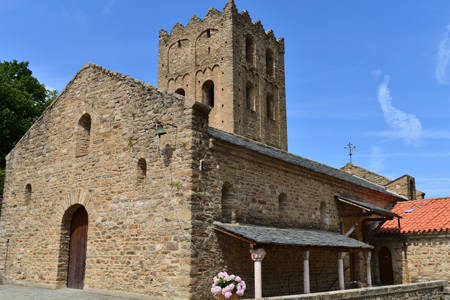 |
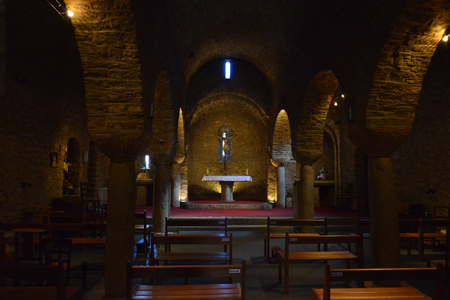 |
| Upper church,
11e siècle |
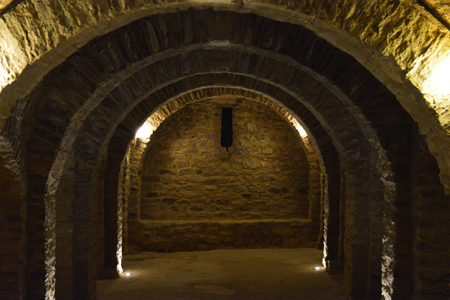 |
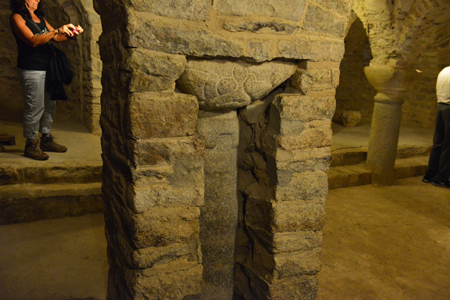 |
| Lower church, 10e Sicle |
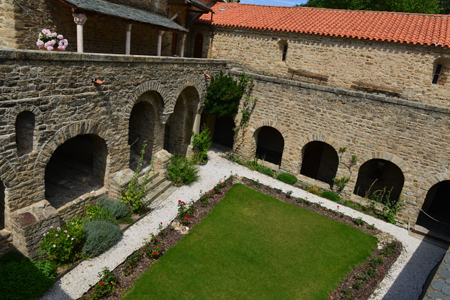 |
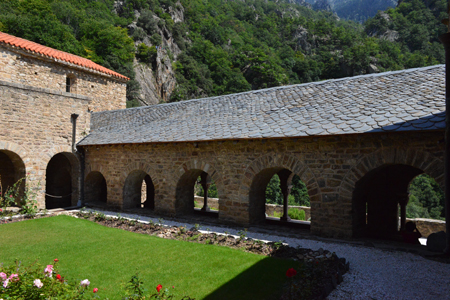 |
| Closter |
Abbaye Saint-Michel-de Cuxa
On Friday, August 22 I visited of good
morning the Abbey St Michel-of-Cuxa, (coutcha).
As much from others sold as quite
national with the Revolution it fell
quickly in ruin fault from
maintenance. Of course the materials
were vandalized. Certain parts were
even found in the USA sold by some
indelicate second-hand dealers!
Rebuilt the cloister remains
incomplete as certain part of abbey
whose vessel is characterized by the
arcs wisigothic. It employed the pink
marble coming from Villefranche-of-Conflent.
The crypt devoted to the Virgin with
the infant is single with its central
pillar supporting the vault.
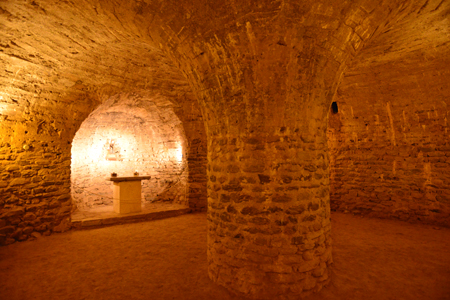 |
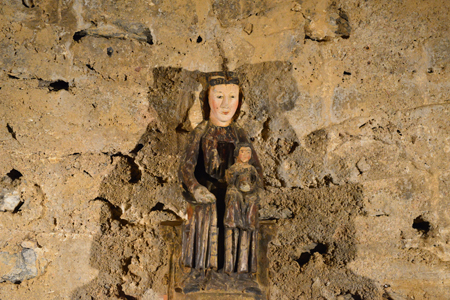 |
| Crypt, chapel of Virgin de la Crèche |
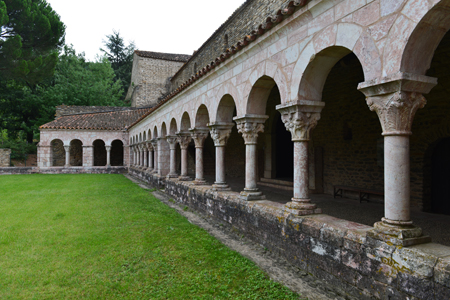 |
 |
| Closter in pink marbel |
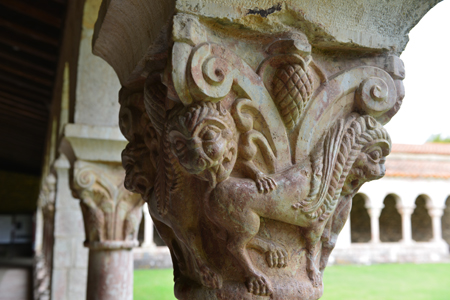 |
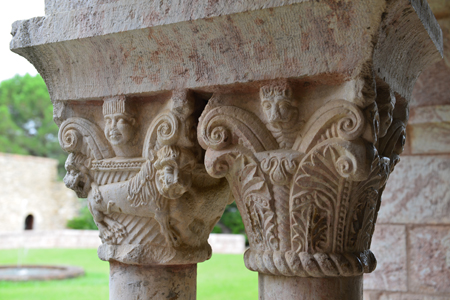 |
| Chapiteaux |
 |
 |
| Portail, ancienne tribune |
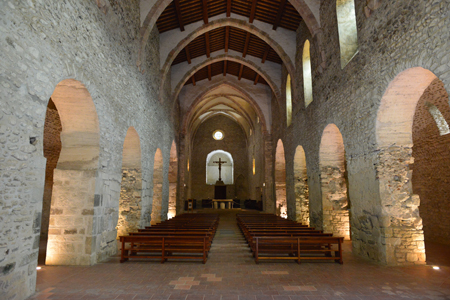 |
 |
| Abbatial church |
Wisigothic arc |
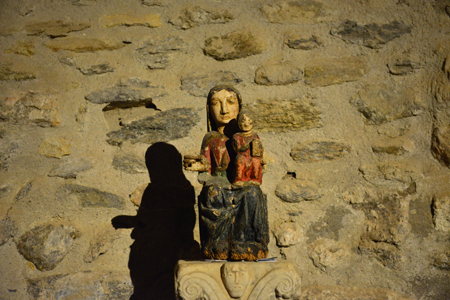 |
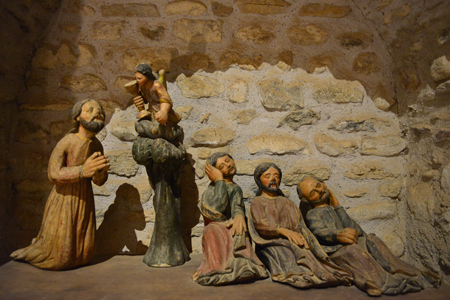 |
| Virgin with the infant, 12th century |
Jesus with apostles, 12th century |
Prieuré de Marcevol
Further in the mountains the Priory of
Marcevol is also 12th century. A very
pretty fresco of Christ without is not
pointed out the fresco of the church Sant
Climent de Taûl in Spanish Catalonia.
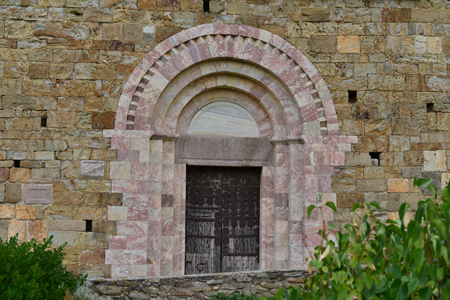 |
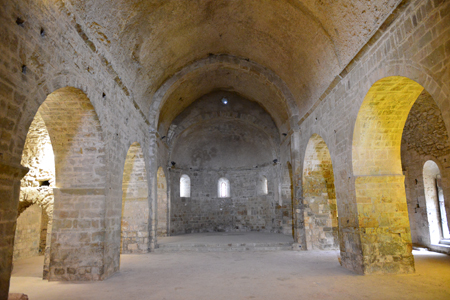 |
| Portal out of pink marbel |
Romanesque nave |
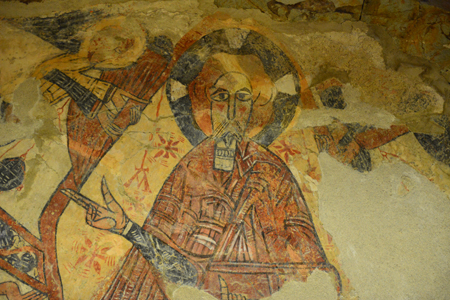 |
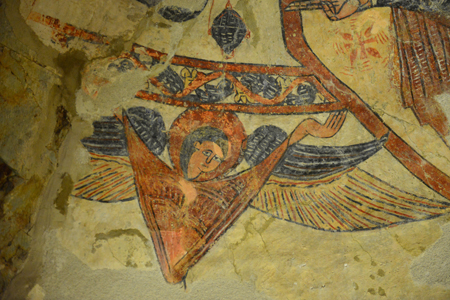 |
| Fresco of Christ |
The Organ of Ille-sur-Têt
The day finished with the Organ of
Ille-sur-têt created by climatic erosion,
rain and temperature variation. This kind
of geological monument is visible in the
whole world, for example at Bryce Canyon NP
in the USA. I bivouacked on the spot at
the time when a violent storm burst.
Prieuré de Serrabone
On Saturday, August 23 I undertook the
rise of Aspres by a tortuous way, D
618 to Amélie-les-Bains then D 84 at
the attack of the Prieuré de Serrabone,
the good mountain. For the Green
Guidebook it is one of the wonders of
the Romanesque art in Roussillon.
Unquestionably it is by the
austerity of material of its
construction, the schist, by the
simplicity of its architecture and the
sculptural wealth of the platform
which bars the nave in two parts, one
for the canons, the other for the
parishioners and at the balcony the
choruses. As well in the columns
cloister as in those the platform the
pink marble of Villefranche-de-Confluent
spreads out its splendor. A panel
indicates that the capitals of the
gate are counterparts, the originals
having been stolen in the year 2000,
still of the indelicate second-hand
dealers to probably satisfy an order;
the mixing business and politics has
neither respect nor scruple. I do not
resist the pleasure, didactic, to show
the table of equivalences so that
those who would wish not to be easily
deceived all while being informed of
the symbolism of the sculptures of the
Catholic religion integral part and
structuring inheritance cultural of
France. Mow to drive in the Pyrenean
mountains I returned to Argelès
where I had spent on July 27th at
Texas Camping. I remained two days of
rest there.
 |
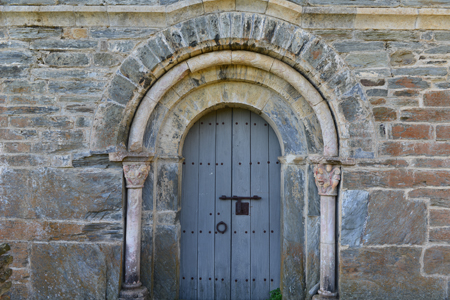 |
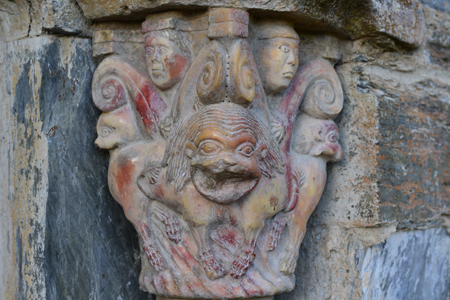 |
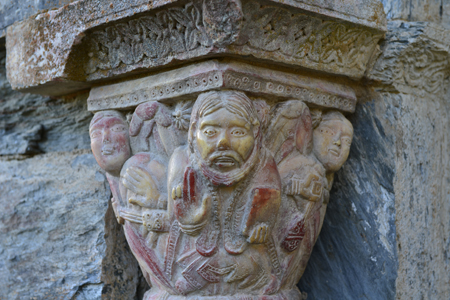 |
| Capitals of the
gate |
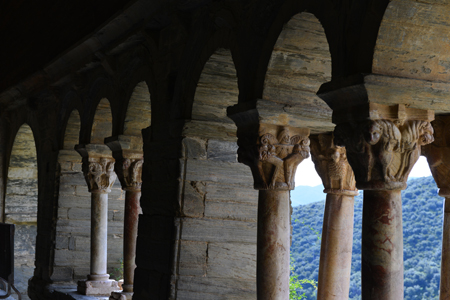 |
 |
| Cloister |
 |
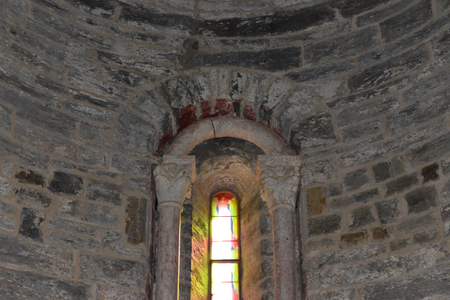 |
| The nave |
 |
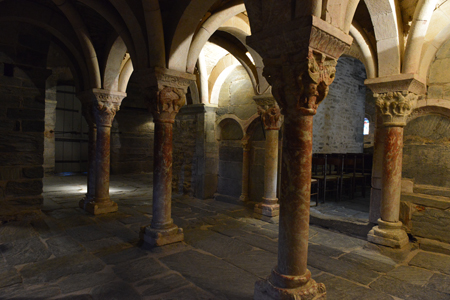 |
| The tribune |
 |
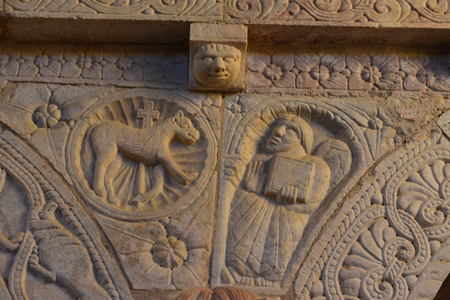 |
| Marc & Jean |
Luc & Mathieu |
